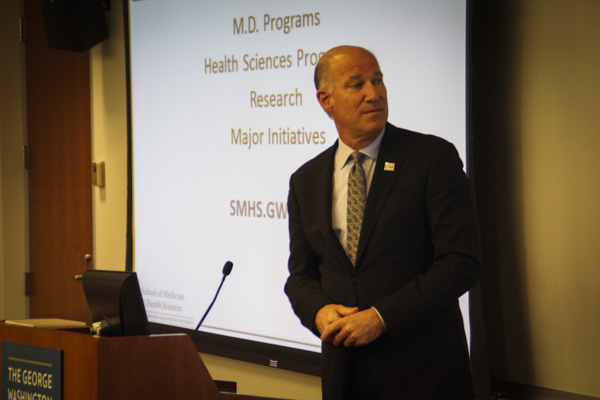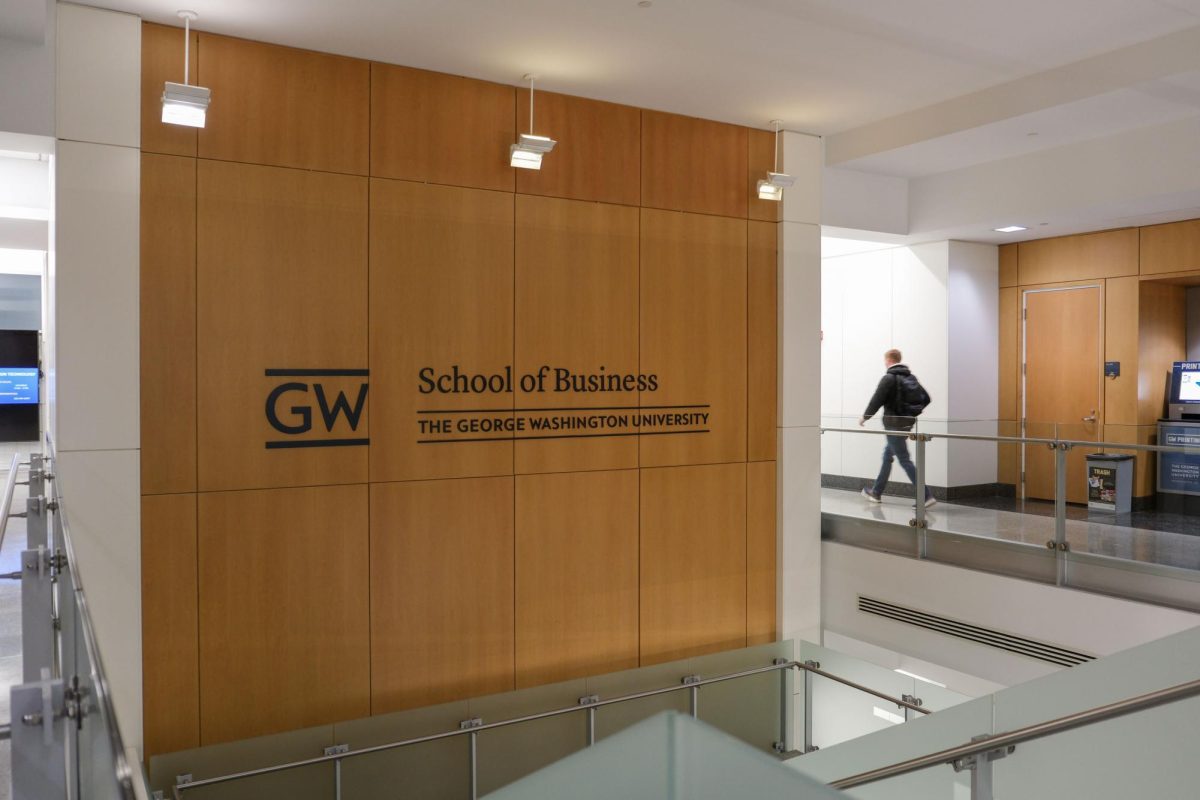One of the most selective medical schools in the country has gotten even more selective.
Jeffrey Akman, the dean of the School of Medicine and Health Sciences, said at a Faculty Senate meeting this month that the medical school received about 12,000 applicants for 177 slots in the doctor of medicine program — the most the school has ever received in its nearly 200 years. The jump in applications was likely due to recent tweaks to the medical school’s curriculum and a national growth in interest in medicine, faculty members said.
The incoming class is made up of 60 percent female and 40 percent male students, and the class is diverse in both gender and background, Akman said during the meeting.
The incoming class ranges from 21 to 41 years of age, represents 30 states, D.C., Canada and 18 ethnic backgrounds, according to data from the medical school’s website.
“It is a very diverse class, really in every way that you can imagine in terms of backgrounds,” Akman said.
SMHS attempted to diversify the school’s applicant pool in 2013 by giving less weight to applicants’ GPAs and test scores during the admissions process.
Akman said most of the incoming students are interested in biology, but he noted that there was increased interest in psychology this year after a change in the Medical College Admission Test, which now includes psychology and sociology, he said.
According to data from the medical school’s website, the average total MCAT score for the old exam was a 30 out of 45, and is now 510.8 out of a total of 528. The average graduate GPA was a 3.70.
The School of Medicine and Health Sciences was named fourth in the top 10 most selective medical schools in the nation by U.S. News and World Report in March, a reputation the school has held since before 2011.
Akman said during his presentation that the curriculum in the M.D. program is in “the midst of revision.” The school has focused on integrating basic science classes with clinical experiences and is adding public health courses into the curriculum, he said.
“We have reduced the amount of lecture time and increased the amount of active learning and team-based learning,” Akman said. “We continue to look for new ways to integrate technology.”
Last year the medical school began distributing iPads to its first-year class. In 2014 SMHS launched a curriculum overhaul to increase patient-care training and improve students’ clinical skills.
Medical school spokeswoman Anne Banner did not return multiple requests for comment on whether the school is considering adding more faculty to accommodate students and if SMHS increased outreach to college students.
Janice Blanchard, an associate professor of emergency medicine, said that SMHS exposes students to clinical medicine early in their medical school years, whereas most other schools focus only on basic sciences during students’ first two years.
“The school now integrates other medical disciplines into the learning process early on from the first year, exposing students to important issues that affect our practice such as public health and health policy,” Blanchard said.
Because medicine offers career stability, there has always been an interest in the field but GW’s unique curriculum is even more appealing to students, she said.
“Medicine is a career that involves service to fellow citizens and has always attracted a large number of individuals,” Blanchard said. “GW offers a unique curriculum because it combines medicine with other broader disciplines that impact health such as health policy and community medicine.”
Jehan El-Bayoumi, an associate professor of medicine, said there has been a national increase in students interested in pursuing medical careers because they offer job security.
Applications to medical schools nationally have increased by 6.2 percent in the last 10 years, according to a report from the American College of Medicine.
“The field of medicine offers economic security, and lots of advances in the field make it exciting,” El-Bayoumi said. “It is one that is stable so it can be relied on.”







